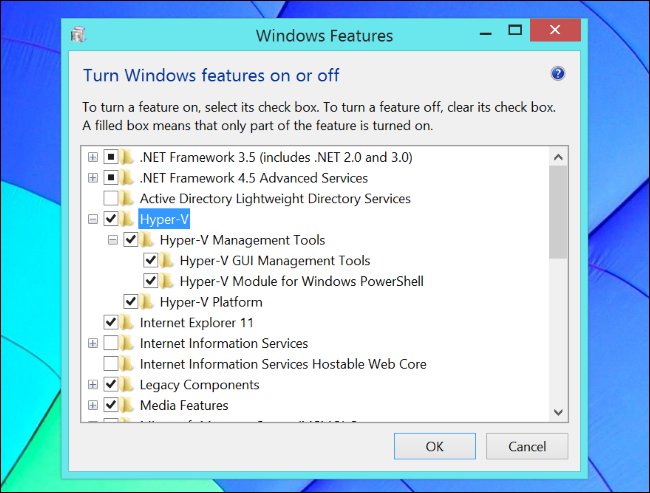
- #Hyper v windows 8.1 download how to
- #Hyper v windows 8.1 download install
- #Hyper v windows 8.1 download upgrade
To add the tools that you use to create and manage virtual machines, click Add Features. On the Select server roles page, select Hyper-V. On the Select destination server page, select a server from the server pool and then click Next. On the Select installation type page, select Role-based or feature-based installation and then click Next. On the Before you begin page, verify that your destination server and network environment are prepared for the role and feature you want to install. In Server Manager, on the Manage menu, click Add Roles and Features.

#Hyper v windows 8.1 download install
Install the Hyper-V role by using Server Manager You can install the Hyper-V role in Server Manager or by using Windows PowerShell. To enable Client Hyper-V on Windows 8 or Windows 8.1 To install the Hyper-V role in Windows Server 2012 or Windows Server 2012 R2 Install Hyper-V so you can create and run virtual machines on this computer. Software to install as the guest operating system for the virtual machine.
#Hyper v windows 8.1 download upgrade
Step 4: Install or upgrade integration servicesīefore you install Hyper-V, make sure that you have the following:Ī user account with administrator permissions for the computer.Įnough memory to run all the virtual machines that you plan to run at the same time. Step 3: Install the guest operating system For the most current version of this topic, see Install Hyper-V on Windows 10 or Install the Hyper-V role on Windows Server 2016. To learn more about Hyper-V including system requirements, see Hyper-V overview.

#Hyper v windows 8.1 download how to
Learn how to get started with Hyper-V on Windows Server 2012, Windows Server 2012 R2, Windows 8, or Windows 8.1 Professional and Enterprise editions. Hyper-V Manager can now be used to create virtual machines on your local machine.Applies To: Windows 8, Windows 8.1, Windows Server 2012, Windows Server 2012 R2 Once the feature set has been enabled, the Hyper-V Manager can now be found via the search bar or can be found at Control Panel > Administrative Tools > Hyper-V Manager. Once the features have been confirmed, it may take a few minutes to enable the newly-added Hyper-V features. Although the Hyper-V Module for Windows PowerShell is not a necessary feature for most users, I went ahead and added it for this example. Next, enable the Hyper-V Platform and Hyper-V GUI Management Tools.

Once Programs and Features has opened, click on Turn Windows features on or off on the left hand navigation. This can be done by navigating to Control Panel > Programs and Features or in the example below, click Start and type in Programs and Features. The first thing to do to enable Windows Hyper-V will be to access Programs and Features. If you try to uninstall VMware Workstation after the HyperV role has been installed, an error will pop up stating: “ Error: This product may not be installed on a computer that has Microsoft HyperV installed.“ If you have VMware Workstation running on your machine, make sure to uninstall the program before installing the Hyper-V role. This article explains how to enable Hyper-V for Windows 8 and Windows 8.1. However, Microsoft did include the option to enable Hyper-V Manager. When Windows 8 and Windows 8.1 were released, many users found that XP mode was no longer being offered with these operating systems.

One way Microsoft alleviated this issue was by creating Windows XP mode, which can be found here: When many organizations switched to Windows 7, they found that many of their legacy applications built for Windows XP no longer worked.


 0 kommentar(er)
0 kommentar(er)
